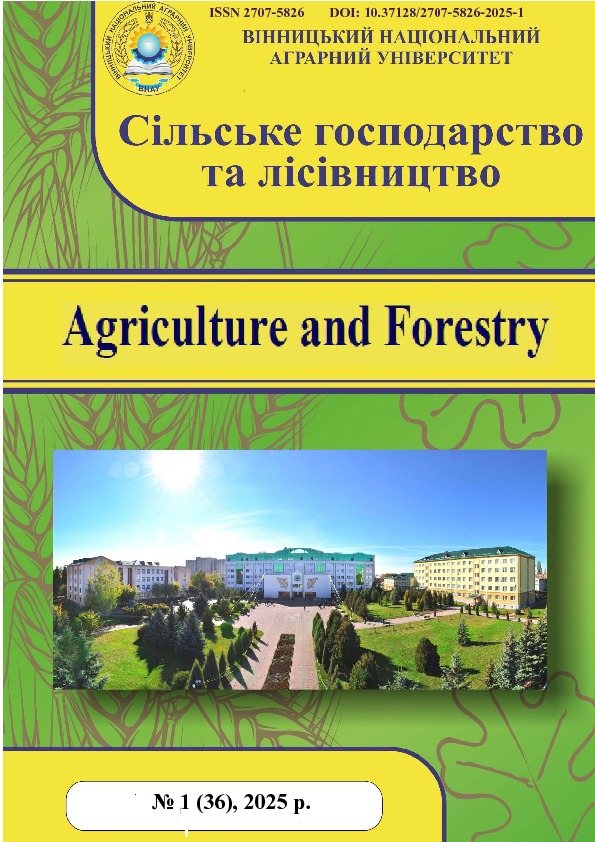id: 39001
Title: Main sunflower pests and control of their number
Authors: Rudska N., Renskyi T.
Keywords: sunflower, major pests, seed poisoning, insecticides, efficiency, yield
Date of publication: 2025-05-12 08:56:50
Last changes: 2025-05-12 08:56:50
Year of publication: 2025
Summary: This article highlights the issues of improving and justifying the elements of the sunflower protection system against major pests in the Vinnytsa region. As a result of the conducted entomological monitoring, the most harmful species of phytophagy were found, among which the larvae of blacksmith beetles (true wireworms) and the meadow butterfly were the most numerous. It was noted that in a systematic sense, among the detected larvae, the largest number was observed in the larvae of the Agriоtes obscurus L. – 46,3%, a somewhat smaller number was observed in the larvae of Agriоtes lineаtus L. – 22,1%. The number of the Sеlatosomus latus F. and the Agriоtes sputator L. 12,7% and 12,2%, respectively. The share of other species in the structure was 6,5%. It was found that when growing sunflower, it was possible to reduce the number of wireworms for the period of full emergence of seedlings by 84% when using the drug Gaucho plus 466 FS, TH (10,5 l/t), 88% when using the drug Semafor 20 ST, t.c.s. (2,5 l/t). The best among the studied insecticides was the drug Cruizer 350 FS, t.c.s. with a drug consumption rate of 10 l/t of seeds, the effectiveness of the drug was 92%. Thanks to seed treatment, the highest yield was obtained when using the drug Cruizer 350 FS, t.c.s. (10 l/t), which allowed to obtain the highest sunflower yield of 2,8 and 3,4 t/ha in 2023 and 2024, while the average yield was 3,1 t/ha. It was noted that the larvae of the meadow butterfly inhabited the sunflower crop during the growing season. The number of phytophagous caterpillars in sunflower crops before processing in the experimental variants was 7,7–8,1 ekz./m2, and exceeded the ETH (8–10 ekz./m2). It was found that the highest technical efficiency (96%) was observed when using the drug Coragen 20 CS, c.s. at a consumption rate of 0,15 l/ha. Effective control of the larvae of the meadow butterfly was observed on all versions of the researched preparations, which contributed to obtaining a higher yield, which was 2,5 t/ha in the control. The variant using the drug Koragen 20, CS at a rate of 0,2 l/ha, provided the highest yield – 3,6 t/ha, which is 1,1 t/ha more compared to the control.
URI: http://repository.vsau.org/repository/getfile.php/39001.pdf
Publication type: Статті у наукових фахових виданнях України (Copernicus та інші)
Publication: Сільське господарство та лісівництво. 2025. № 1 (36). С. 97-111. DOI: 10.37128/2707-5826-2025-1-8
In the collections :
Published by: Адміністратор
File : 39001.pdf Size : 1254750 byte Format : Adobe PDF Access : For all

| |
|
|